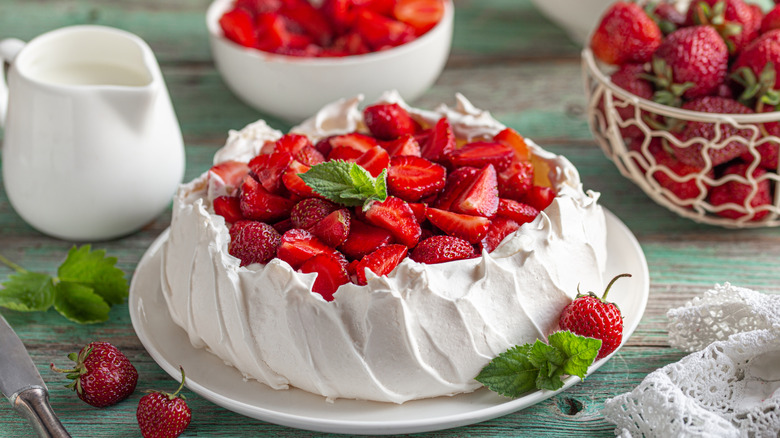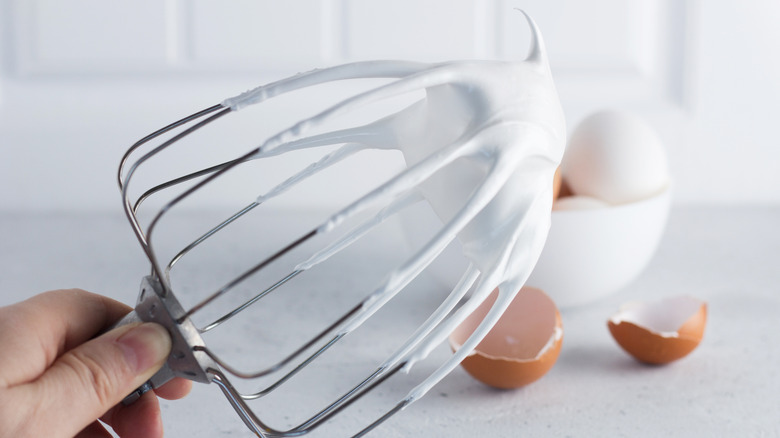The Meringue Mistake That's Ruining Your Pavlova
It's almost impossible to take a spin through social media these days and not come across a drool-worthy pavlova. But if you're not carefully following instructions, it can be just as impossible to get those photo-finish results. The base of every pavlova, like our raspberry version, is a sweetened meringue made with egg whites, which needs to be handled with care to achieve a crispy exterior and a soft, chewy center.
Sofia Schlieben, Corporate Pastry Chef at New York City-based JF Restaurants, told Food Republic that the key to pavlova success is careful whipping. "Under-mixing will result in a soft, runny meringue," she explained, "while over-mixing can lead to a grainy texture. It's essential to whip the egg whites just until stiff peaks form."
If you're not sure exactly what stiff peaks are, it's when the egg whites can hold a point after you stop the mixer and pull the whisk out of the bowl. As you're whipping, to catch the meringue at the crucial point described by Schlieben, keep a close eye on the process. The egg whites should also look shiny at this stage, so when they start to get thick and glossy, stop whipping periodically and test for stiff peaks every 15 to 30 seconds. Also, it helps to start with room-temperature egg whites to get the best results.
Use a freeform shape to build your pavlova
Another challenging part of making a pavlova is getting the egg whites to conform to a particular shape. Keep in mind that professional pastry chefs who make all the lovely desserts you see on Instagram work with meringue all the time, so they have a lot of practice making fancy oyster shells and heart shapes. Sofia Schlieben noted that for your first attempts at pavlovas, however, don't stress too much about making them look perfect. "For beginners, I like to recommend starting with a traditional freeform shape, like layering the meringue in a trifle-like style," she said.
Once you get the meringue technique mastered, you can start to play around with different shapes, as well as baking times to find the texture you prefer. If you like a softer pavlova, which makes it a little bit different from a traditional meringue, you can also try adding extra ingredients like cornstarch with some lemon juice, vinegar, or cream of tartar. The cornstarch will help achieve a softer texture, while the acids will give the whites some extra stability.
"Pavlova preferences can be very personal," said Schlieben, adding that she encourages experimentation to discover the perfect pavlova for your taste. "Some people prefer a soft center with a crunchy exterior," she added, "while others enjoy it fully crunchy." The nice part of experimenting with pavlova making is that no matter what technique you try, they'll all taste delicious.


